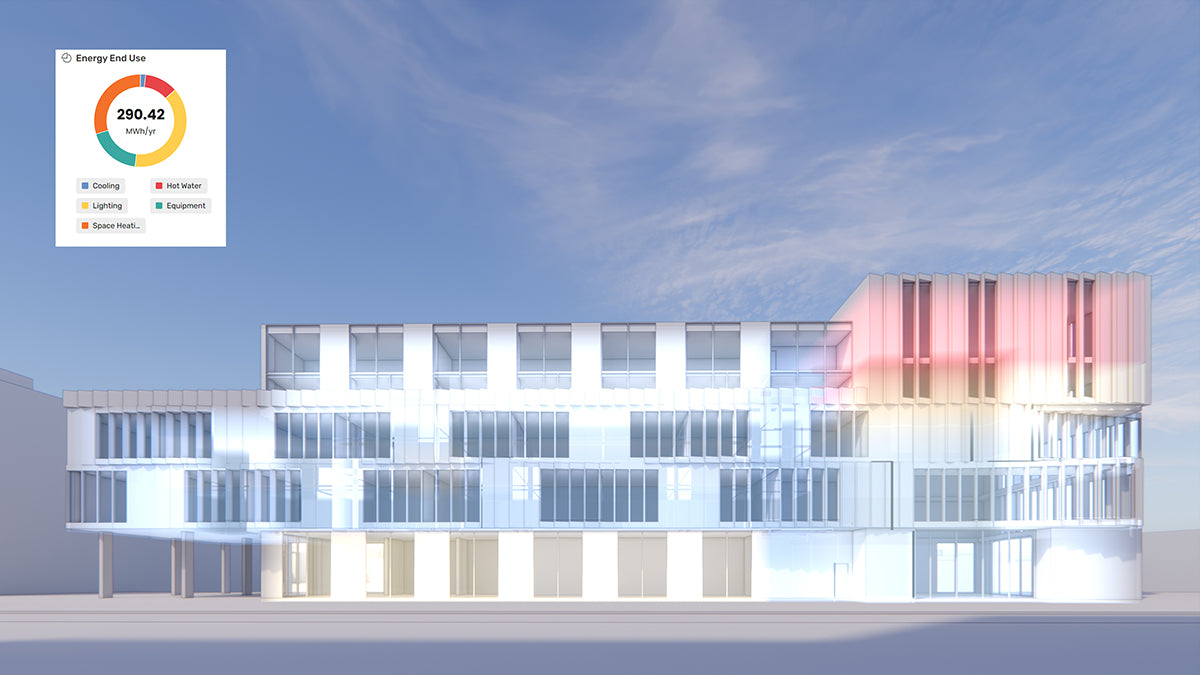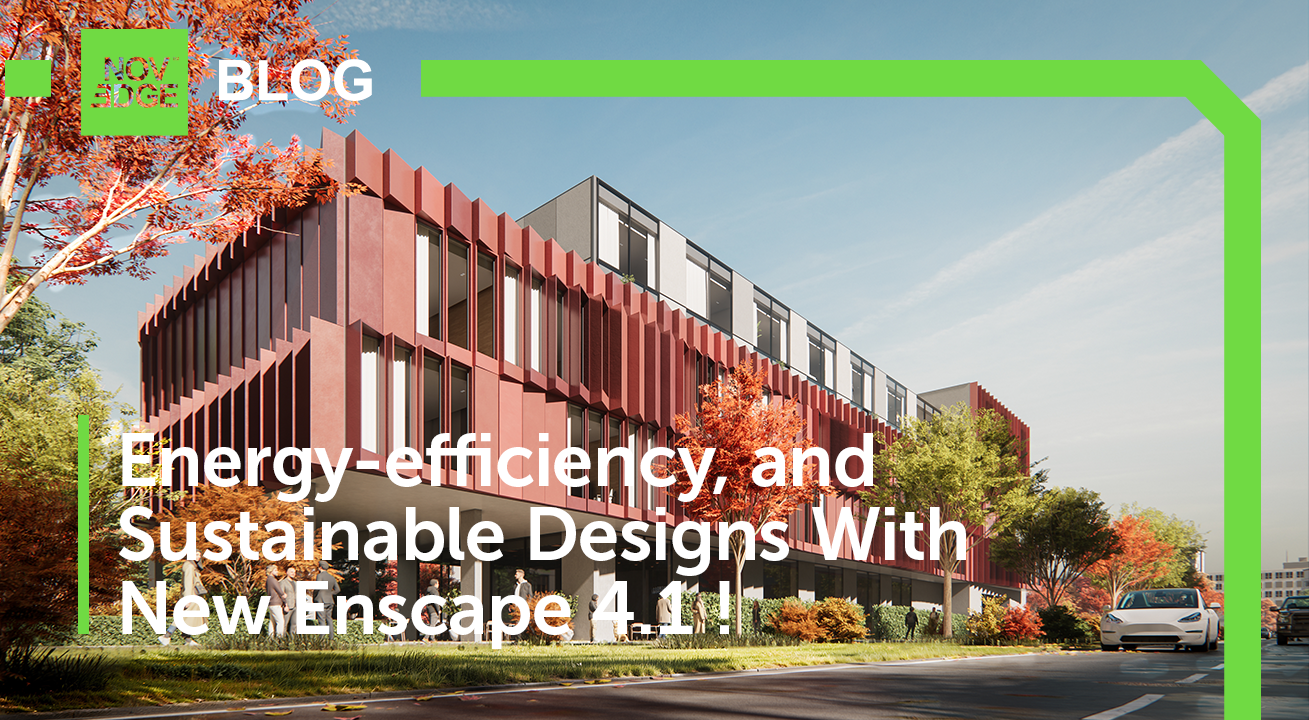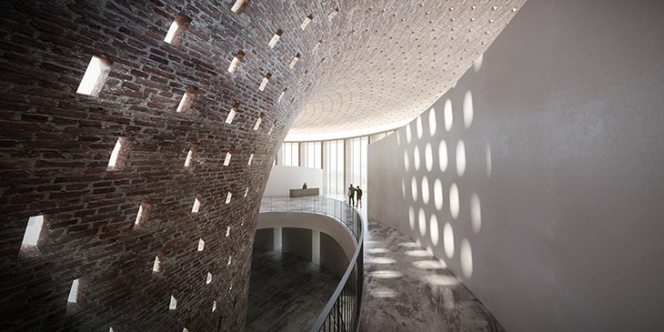Your Cart is Empty
Customer Testimonials
-
"Great customer service. The folks at Novedge were super helpful in navigating a somewhat complicated order including software upgrades and serial numbers in various stages of inactivity. They were friendly and helpful throughout the process.."
Ruben Ruckmark
"Quick & very helpful. We have been using Novedge for years and are very happy with their quick service when we need to make a purchase and excellent support resolving any issues."
Will Woodson
"Scott is the best. He reminds me about subscriptions dates, guides me in the correct direction for updates. He always responds promptly to me. He is literally the reason I continue to work with Novedge and will do so in the future."
Edward Mchugh
"Calvin Lok is “the man”. After my purchase of Sketchup 2021, he called me and provided step-by-step instructions to ease me through difficulties I was having with the setup of my new software."
Mike Borzage
The Edge: Tom Givone, Design with a Twist.
May 07, 2015 6 min read
Novedge: Tell us a bit about who you are and what you do.  Tom Givone: I was born in the Bronx, grew up just north of the city, and have been living in Manhattan since graduating from Columbia College in 1991. I’m self-taught and focused primarily on the transformation of derelict 19th century structures. As a very small boy, I’d ride the train into New York with my grandfather and press my face to the window whenever we crossed over Harlem, mesmerized by the rows of blighted townhouses around 125th street; the decaying millwork, shattered glass, the play of sunlight across all those majestic, crumbling facades. It’s a memory etched deep in my psyche, and very much affects the work I do today. In fact, my present home and very first project, a dilapidated row house found in 1998, is just a few blocks away.
Tom Givone: I was born in the Bronx, grew up just north of the city, and have been living in Manhattan since graduating from Columbia College in 1991. I’m self-taught and focused primarily on the transformation of derelict 19th century structures. As a very small boy, I’d ride the train into New York with my grandfather and press my face to the window whenever we crossed over Harlem, mesmerized by the rows of blighted townhouses around 125th street; the decaying millwork, shattered glass, the play of sunlight across all those majestic, crumbling facades. It’s a memory etched deep in my psyche, and very much affects the work I do today. In fact, my present home and very first project, a dilapidated row house found in 1998, is just a few blocks away.
Novedge: You are not an Architect in the traditional sense…would you care to explain?
Tom Givone: I don’t have a degree or any formal training; outside a bit of coursework at the Columbia School of Architecture, my education has been in the hands-on design and renovation of a series of neglected 19th century structures, purchased with loans, starting with the row house in Harlem and evolving through several abandoned farmhouses in the Catskill mountains. Nail-biting an endeavor as that all was, the approach allowed me to experiment freely with materials and methodologies, explore my own ideas, make lots of invaluable mistakes, and bring the hard-won fruits of those efforts into my client projects. As my design work has grown more conceptual and technically ambitious, I’ve teamed up with Architects, Engineers, anyone with the expertise to help me turn them into built reality; a roller coaster manufacturer was tapped to help fabricate a torqued-volume addition for a recent project. “Architectural designer” is the most common title for what I do. But for me it’s just having an intuition about what a building can be, how a compelling tension between historic and modern can be achieved, and seeing it through by whatever methods and means necessary.
Novedge: What is a recent project you have been working on?
Tom Givone: My most recent project is the Twist Farmhouse, an 1850’s homestead in rural PA. The house was a lot like other similarly aged homes I’ve seen that had been updated over the years: the 70’s called and wants it’s Linoleum back. But I knew that the good stuff, like original wide plank floors and hand hewn beams, was lurking beneath all those added layers. So the first design impetus was to bring the original house back. The second was to turn it on its ear.  My client grew up, with her seven siblings, in the old farmhouse right across the street. Her brother still lives there, and like the creek that runs through both properties, family flows freely back and forth. I imagined this family bond as a physical force, like a gravitational field between the two homes, acting on the addition and “pulling” it towards the original farmhouse across the street. This was how I arrived at the volume’s shape; a sculptural expression of family connection. Twisting it in this way opened up new sightlines as well, allowing my client to view her childhood home and the surrounding fields as it “nods” towards them.https://player.vimeo.com/video/124121865?title=0&byline=0&portrait=0
My client grew up, with her seven siblings, in the old farmhouse right across the street. Her brother still lives there, and like the creek that runs through both properties, family flows freely back and forth. I imagined this family bond as a physical force, like a gravitational field between the two homes, acting on the addition and “pulling” it towards the original farmhouse across the street. This was how I arrived at the volume’s shape; a sculptural expression of family connection. Twisting it in this way opened up new sightlines as well, allowing my client to view her childhood home and the surrounding fields as it “nods” towards them.https://player.vimeo.com/video/124121865?title=0&byline=0&portrait=0
Building Twist (short version) from tomgivone on Vimeo.
Before that, I completed the Floating Farmhouse, an 1820’s manor home in the Catskill Mountains. Sited at the edge of a pristine creek, with a waterfall cascading over an old dam of hand-laid stone, it was the usual fright fest when first discovered, but what a beauty. After a design and build process spanning four years, the home is now a study in contrasts: fully restored to its period grandeur while featuring purely modernist elements, including a glass curtain wall in the kitchen, polished concrete and steel finishes, minimalist interiors, and a cantilevered porch “floating” on the surface of the water.  The Floating Farmhouse was primarily about exploring and highlighting the contrast between historic and modern by way of materials; wavy glass windows, wide plank floors and hand hewn beams combined with skyscraper glass, polished concrete, and Corten steel. With Twist I evolved that design sensibility to explore the contrast between historic and modern forms as well.
The Floating Farmhouse was primarily about exploring and highlighting the contrast between historic and modern by way of materials; wavy glass windows, wide plank floors and hand hewn beams combined with skyscraper glass, polished concrete, and Corten steel. With Twist I evolved that design sensibility to explore the contrast between historic and modern forms as well.  Novedge: What's your Design Philosophy?
Novedge: What's your Design Philosophy?
Tom Givone: I think mine is more an inclination than a philosophy. I’ve always been deeply drawn to both early primitive and late modern architecture. To resolve those split creative impulses, I started combining them. In the process, I discovered how doing so highlights the innate beauty of each by virtue of its contrast with the other, and lends a vitality to each not found previously. Melding historic and modern elements in this way also allows me to embrace cutting-edge technology while honoring the simplicity of craft. If anything, I guess my design philosophy is that opposites attract.
Novedge: Do you have a few example of Architectural Salvage you can share with us?
Tom Givone: I found an18th century hand-chiseled Italian marble sink in a hillside on the outskirts of Rome. I mean hillside literally; it was lying in the dirt on a grassy slope littered with other ancient stone artifacts. Had no idea where I would use it or how, but was determined to take it home. I tried to pass it off as my second carry on item, but Alitalia set it aside for sanitation pick up instead. Fortunately, my Roman girlfriend's dad was a retired Alitalia mechanic, and we managed to slip it on a cargo flight to JFK. It is now in the Floating Farmhouse, set on a heavy steel angle bracket concealed in the wall to appear weightless and hovering in the guest bathroom, belying the sizeable heft that nearly broke my arm trying to pass it off as light enough to travel with me in coach.  A wood and copper tub, dated to the late 1800s, was discovered in a tenement in the lower east side of Manhattan. I wrapped the tub in stainless steel to emphasize its clean architectural lines and recast it in a thoroughly modern context. The challenge there was laser-cutting the stainless steel to precisely follow the bow in the room’s original wood floors. It now rests opposite the Italian marble sink in the spacious guest bath.
A wood and copper tub, dated to the late 1800s, was discovered in a tenement in the lower east side of Manhattan. I wrapped the tub in stainless steel to emphasize its clean architectural lines and recast it in a thoroughly modern context. The challenge there was laser-cutting the stainless steel to precisely follow the bow in the room’s original wood floors. It now rests opposite the Italian marble sink in the spacious guest bath.  Novedge: Why is the Reclaim Game so important and why should everyone play along?
Novedge: Why is the Reclaim Game so important and why should everyone play along?
Tom Givone: Waste from building construction accounts for 25% of all landfill in the United States. 50% of that waste is in the form of demolition debris. While the use of building materials derived from recycled or responsibly harvested sources is a positive trend, the greenhouse gases generated by the manufacture and shipping of these materials often outweigh the benefits. For me, reclaiming an old structure, or the architectural elements of which it’s made, isn't a green impulse. It’s a creative one. There’s something mystical about aged materials that, when juxtaposed against modern elements, always surprises and delights. But it also happens to be about the greenest thing one can do. It avoids the landfill, spares the energy of production, and (in the case of reclaiming an entire building) recycles an existing footprint. And when combined with the latest in green technology, makes for a home that is as timely as it is timeless.
Novedge: What's the main difference in Designing for the city as opposed to Designing for the country?
Tom Givone: In terms of Design, I don’t treat them as two different styles; I fuse primitive and modern materials and forms in all of the work. One thing I have discovered, to my surprise, is that my country clients seem willing to take bigger design risks. As a city boy myself, immersed in New York’s design-minded ways, I had always assumed the opposite. Maybe it’s all that fresh air, but there tends to be more trust and ease, a sense of play, that can make for some wonderfully unexpected results.
Novedge: Who is your architectural guru and why?
Tom Givone: I would have to say the artist Gordon Matta-Clark; the way he cut up old buildings, slated for the wrecking ball, and turned them into sculpture, was just so conceptual, so free. He saw the beauty.
We do see the beauty too in Tom's Design. If you want to know more about his projects, check out Tom Givone's websiteand follow him on Facebook.
If you feel inspired and want to start designing right away , Novedge has the software tools you need.
Related articles
Also in NOVEDGE Blog

How the AEC Industry Shifted Towards Essential Sustainable Building Design
August 15, 2024 4 min read
Read More
Unlocking New Realms of Design with Enscape 4.1: Introducing Impact Add-on and Lot More
August 02, 2024 2 min read
Read More
Explore Autodesk Revit 2025.2: New Features and Enhancements for Enhanced BIM Workflows
July 30, 2024 3 min read
Read MoreSubscribe
Sign up to get the latest on sales, new releases and more …





